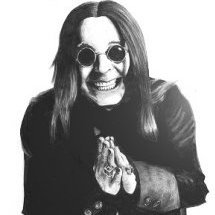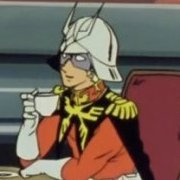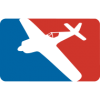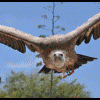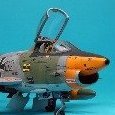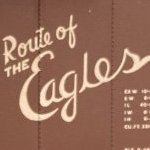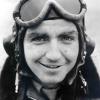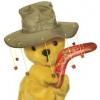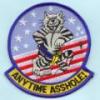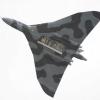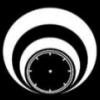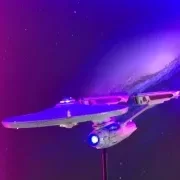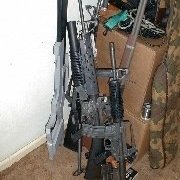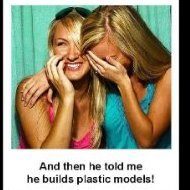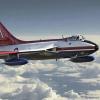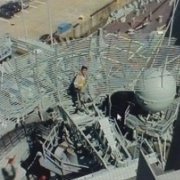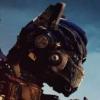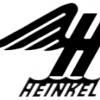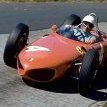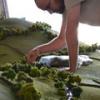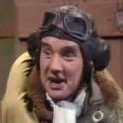Leaderboard
Popular Content
Showing content with the highest reputation on 28/01/17 in all areas
-
Hello, I would like to present my 1/72 Westland Wessex 60 series 1. Italeri kit with windows modified for a Wessex 60. Intake grill also opened up as these were removed for North Sea flying; I believe it was because they could ice up and block the intakes but not certain of that? Detailed with Eduard photo etch and brass rod & wire. Decals are from two S&M sets (for the Bristow & BP logo), the registration is from an RAF letter set and the stencils are a mish mash from my spares. Slightly over weathered for this aircraft, so apologies to any Bristow employees (Past & present) as I'm sure you would not allow your aircraft to get in this state The model represents C/N wa560, G-ATSC as operated by Bristows from North Denes. For info, in 1976 this aircraft ditched in the North Sea shortly after takeoff from West Sole gas rig platform C, after both engines stopped due to ingestion of the not removed engine intake covers, 14 occupants, thankfully no casualties. Built as part of the Westland Wessex group build, build thread here thanks for looking Aaron30 points
-
I'd like to present my Prowler, 1:48 scale from Italeri box. I added some PE of Eduard and modified one wing.29 points
-
Mitsubishi A5M4 Claude, Imperial Japanese Navy, I N J Kaga, Finemolds 1/48th scale Click on WIP to see the build thread. The kit contained 67 parts, and apart from the seat harness, was built straight out of the box including decals. It was painted with Aclad II, Aeromaster & Tamiya Acrylics. Thanks for looking, Joe.19 points
-
Latest off the bench is the Airfix 1/48 Spitfire mk22. Straight from the box but the decals are Eagle Strike. Markings are for 603 (City of Edinburgh) Squadron. This is my 75th. Spitfire/seafire in 1/48 ..... getting a bit of an obsession ............... luckily I have enough in the stash to reach my ton Hope you like. Please feel free to comment. Thanks for looking Dick18 points
-
Done! Here are some pics from my buddy Jason: Eduard boxing of Zvezda plastic AKAN paints Thank you!17 points
-
This is my recently finished project, the French AMX-10 rcr Tank Destroyer in 1/35, kit from Tiger Model. The kit comes with good details, but a bit on the soft side, all in all, I'm happy with what it turns out/ Hope you enjoy.16 points
-
Hi all first my apologies not been on much of late ...been battling my depression over past couple of month and everything's has been going wrong since ie, my laptop packed up then my tv now my tablet..haveing to borrow a old pc that swear is ran by a hamster in a wheel as so slow!!!!and not even watched any daily vlogs/shows since before Christmas as cant get them to play without continuous buffering etc.... this was my 3rd completion so far this year lol...and great little kit no major issues well till got to the decals and not sure if was just me but had numerous problems with some the day glo ones were to thick and refused to lay flat despite using micro sol etc and mr softner... but looks good now its finished as adds bit of colour to the display case lo, hope that airfix bring out later versions or some one does a a/m set as would like to do few later schemes...16 points
-
Here we are - this is a fun build I started to have a go at some weathering on. My Lightning wasn't going well at the time, so I decided to do something simple and fun, and get something finished. I chose a spitfire, and was delighted that a beer keg carrying spitfire was available. Now - I know Spitfires are a VERY popular subject, and that I have a number of errors here.Sorry about that for the major enthusiasts, feel free to point out inaccuracies, I don't mind, but even so I am quite happy with this model. I did a little bit of weathering using Flory washes, and a small amount of humbrol aluminum to represent paint chips. Overall, pretty happy with the result. It's the Italeri Beer Truck Spitfire, which I believe is a rebox of a Hasegawa mould. Painted with Hataka paints, except for black, white and yellow which were Vallejo. Nothing too fancy - I used aftermarket wheels because the kit ones really didn't look right to me, otherwise strictly out of the box. I masked and painted the invasion stripes rather than attempting to use the kit decals. Build thread here: Piccies:13 points
-
This is a kit that I built last year before I joined the forum but I photographed it recently along with some fresh models and here it is ps: The scheme is of course pure fiction . cheers12 points
-
Wingnuts awesome (and now sold out) D.VII kit. Only aftermarket was some resin bits for the engine. Otherwise, I just added some wiring for the engine, everything else is straight out of the box. Kit decals with the lozenge oversprayed with a dilute brown to replicate the tinted varnish applied to most D.VII's in the field. Fantastic kit and best of all (from my perspective at least), minimal rigging. Sorry for the horrible picture quality!10 points
-
Trumpeter 1/48 plus Eduard PE. Very fast and simply kit. Markings - AztecDecals - "GhostSquadron" Fuerza Aerea Mexicana I invite to comment. Regards Jurek9 points
-
Hi all. I just finished the Eduard 1/48 Hellcat for a friend of mine. The kit builds really easy. No fit problems whatsoever. Included in this kit are some very nice resin wheels and a colored pe set for the cockpit. Also pe spark plug wires for the engine are included. The decal sheet for several versions looks very nice but I don't like the fact that they don't react to decal setting at all. The model was painted with Gunze Aqueous over a base of Alclad black primer. Aqua gloss from Alclad was used as a clear coat before the wash and decals were put in place. Final coat used is Alclad matte. Thank you for watching. René8 points
-
Hi all, I recently completed another aussie Spitfire from the Eduard "Aussie Eight" combo. Of course I had to build Clive Caldwell's plane. The build went smoothly, the only minor complaint is the two parts upper cowling which leaves a seam to fix and the rather complicated exhaust installation. I finished the plane following Eduard's instructions using Gunze and Tamiya paints. Weathering is done with Mig Ammo panel line washes and some ink pens. I hope you will enjoy the pictures, best, Christian.8 points
-
Thanks for the nice words, mates. The chemo on Thursday was about the same as always, knocking me down for a day afterward and now I'll have a few more days just feeling blah. The bummer this time was that I've managed to catch a nasty cold - probably due to my compromised immune system and spending a day at the hospital surrounded by, well, sick people! The injection was Neupogen (Filgrastim), as I suspected. This is done to stimulate the production of white blood cells. The chemo kills mine. On the Sea Harrier front, I added the detonation cord to the inside of the canopy: I need to add the rear view mirror to the canopy, and then I think it's ready to go on the model. I also added several antennae to the fuselage - 2x UHF blades behind the canopy, the lower front TACAN blade, the lower front UHF aerial (why so big?), and the lower aft reserve UHF blade. All of these are from the Eduard photoetch fret originally designed for the Airfix kit. I still need to add the IFF aerial on top of the nose along with the yaw vane and windshield wiper. These are all photoetch as well. The seat was added to the cockpit in addition to the control column. What's left? Ah, the nose pitot, the Sidewinders. Oh, that bomb for the center pylon - I forgot about that. I have one that matches the drawing I was sent. Then she'll be finished! At which point the agonizing process of figuring out what to build next begins...maybe I should just go through my stash in alphabetical order. Cheers, Bill8 points
-
Hi folk's another late war Luftwaffe subject is Hobbyboss 190D,delight to build apart from those annoying sprue gates,after the 109F I wanted to get a bit more adventurous with the mottling using an old pen taped to the end of my basic airbrush I might just have got away with it,I have to thank Matt(mattlow) for sending fuselage crosses after the kit ones curled up and died! the swastika markings also curled up so replaced with all I had not accurate but better than none,I,m just about to start a pair of their 262's so hoping for better decal's,many thank's for looking in.7 points
-
If Monty Python had written a script on going after a Zeppelin flying over London I'm positive the crew would have been given a Sage 2 as their aircraft. Only one prototype built and it crashed. Two questions come to mind 1) why did Spin even do this kit and 2) what on earth was I thinking to even buy one? I'd ordered this from Hannants and was working on the Nieuport 10 when the box arrived from the UK. I looked at the low number of parts, the nicely cast thin wings and thought 'why not' let's give it a "spin" (bad pun). After a Google search for "Spin 1/48 Sage 2' all I saw were in-box reviews with no one actually building this kit (or at least posting photos of the completed model) so there was yet another a challenge - can it be built? The parts are actually well cast although the detail is a little soft in places around the sides near the engine. The clear sheet wraps around the cockpit and after several dry runs I think it's going to fit perfectly. I initially thought of using Canopy glue to attach it but am now going to use double faced tape so I can pull it back and reposition it as needed. I spend considerable time painting the cockpit but after attaching the top wing I might as well painted it in pink and purple dots as no one will see it. The Gnome engine, if actually seen, I'd replace, but the huge spinner hides it so am going with the kit's casting. Not much rigging on this little bird either so that's another plus. The casting on the top wing has a lip on the bottom to mount the window structure into. I removed the lip in the front of the wing and narrowed the 'V' casting in the back of the wing to get it to sit inside the cockpit area. Normally I use acc but used 5 minute two part epoxy to attach the wing as I feel the epoxy will hold better in the long run and I wanted some time to get the wing on straight which acc sets up too quickly. As you can see some of the detail parts aren't all that bad and the flash is thin and easy to remove. Here's the Gnome, several casting bubbles between the cylinders and tubes. Once the huge spinner is attached this will be hidden.7 points
-
That's 'awesome' in the idiosyncratic sense of 'add two more months to build'... Tell it to the Barra 'cos the Baron ain't listenin' Hell's ...go fix yer antlers, they've come loose again... Must mean you're due for heatstroke next winter. Fell asleep earlier and woke up with slithers of Tamiya tape stuck to my face, my beautiful face.... Thanks for your kind wishes dear colleague. The Australian editor of The Lancet writes: Insert emoticon for: >checking my health insurance to see if I'm covered for 12-year old malt< May I present you with what is now known at chez Baron as 'man-knitting': Mrs. B - being a craft-milliner amongst other things - is wont to sit propped up on the pillows crochetting sundry hat details of an evening. My equivalent is sitting propped up on the pillows, masking canopies... Sitting there with the magnifying visor with in-built light attached I resemble an out-of-condition Cylon Centurion at his knitting. Doing this at the bench would have seemed incredibly arduous, but for some reason being ensconced on the scratcher all day and tackling this periodically has been an unanticipated pleasure. No two regions seem to be exactly the same size (what did you expect, it's a Barracuda) so you can't simply cut out a series of masks to size in advance. My methodology was simply to to stick a piece of approximate shape and size onto the canopy, and cut to size in place with a sharp scalpel, bespoke suit-style. Suits-you sir. An intense series of interludes doing this over the course of the day but that's an onerous task done now and a perfect antidote to keep the self-pity at arm's length. I'm hoping this dose of lurgey is going to be just an intense 48hrs of 'sweating the hog', as they say, to burn it out of the system. If things go according to plan I'll stick the non-sliding bits onto the fuselage tomorrow. I'm off now for a bit of a hallucinate and some Panadol. Hope you're all having beezer weekends of a leisurely or fulfilling nature yourselves, Tony7 points
-
Go and buy one!!!! Thanks Big D. slow progress as work is hitting Crunch period. But progress we have. I wasn't sure quite where to start so I decided to add the panel lines and slight dirt. ( Ha slight ) this was Thursday but I didn't have the heart to post up. I knew the Red planet would shudder at the sight of it. Not much chance last night for plastic but I got a brief 20 mins before I have to take the kids to the skate park. It's pretty much all coming off, I'm doing it little by little so I get just the right amount left. stage one. stage two. im going to go in more ( cotton buds to the rescue ) to take it right back, subtle I know but I like the result. I'm not sure if I'm going full chips, probably just light scratches on the next pass but I'm going to enjoy cleaning her up. More later. Gotta dash. Grubby John.7 points
-
Several weeks ago I showed some pictures of a "in progress" diorama. It's now finished ; kits and figures from Tamiya. 1/48 scale6 points
-
Calling this one done. 1/48 P-40B/C from Airfix. In the markings of the VVS 20th Guards Fighter Regiment, 1st Composite Division based near Murmansk in 1942. Nose panels replaced sometime during service life. Decals from Xtradecal. This bird actually survived the war, was salvaged from Russia and now flies as part of the Flying Heritage Collection in the US. It was restored in AVG colors.A really great kit in some ways, but in others, it seems almost that they were in a hurry to finish the molds and took some short cuts. But it looks like a P-40 and I have a couple more in the stash! Thanks for looking!6 points
-
Maurice Farman was one of two brothers who each established aviation companies in France in the first decade of the 20th century and who went on to become important pioneers in the years immediately before 1914. Maurice designed a number of machines before the successful pusher layout with a front elevator was adopted. Looking a little like the Wright brothers "Flyer" and its derivatives, Farman followed an idea that was fashionable at the time that connected front and rear elevators helped with horizontal stability. This was M. Farman's first truly successful design which gained a number of records including a distance record of 350 miles in a closed circuit in 1910, and successive duration records between 1911 and 1913. (The Bristol Boxkite was a copy of this design, built by the British and Colonial Aeroplane Company from 1910 until 1914). Following the outbreak of hostilities a few went to France where they were used for reconnaissance but they were quickly withdrawn and from then on only used for training. However at least one machine found its way to the middle east where it was used for reconnaissance in the campaign in Mesopotamia against the Turks which eventually led to the siege of Kut in 1916. It was a robust, reliable machine which was relatively easy to fly and this, combined with its flying record meant that it was entered for the British Military aircraft trials held on Salisbury Plain in 1911. Following success in these trials a number of machines were ordered for the RFC and RNAS in 1911, and it was used for reconnaissance by 2, 4 and 6 squadrons RFC (where it was known as the S7), and training in the years leading to the First World War. Most MF 7's served in the UK as primary trainers until 1916. The French continued to use the type for reconnaissance on the western front until mid-1915 when they too withdrew it from front line duties and used it for training purposes. Most machines were built in France and equipped with 70 hp Renault engines, but some were built under licence in Bradford which were powered by 100 hp Sunbeams, and 47 others built in the UK were powered by 75 hp Rolls Royce Hawks. One aircraft was sold to Norway and this survives in a museum in Oslo: other machines are preserved in Paris and Brussels. Individual aircraft varied from each other as these were hand built, so the exhaust systems of the engines varied, and some later aircraft had fold-down extensions of the upper main-planes, while others had narrow chord lower planes. I have seen photographs of RFC machines with rudder stripes but have not found any with other markings except for the number 12 applied in chalk or white paint on the rudders of the machine at the trials in 1911. I assume that serial numbers were carried on RFC and RNAS machines as was customary prior to August 1914 and possibly Union Jacks were carried on the underside of the lower wings on machines sent to France. However I have tried to represent a machine in early 1914 and because I could not find a photo of one with a serial I have omitted the latter detail. The model represents a "standard" RFC machine with a 70hp Renault engine with one of at least two exhaust systems for this engine. No armament was carried by MF 7's unless the pilot or observer took up a personal weapon. I am not sure where the name "Longhorn" comes from, but it could be the pilot's control column which had two long arms at the top which vaguely remind one of the long horns on highland cattle. It is said that aircraft riggers at the time used to release a pigeon inside the aircraft to see if it could escape - if it could there was a wire missing. There are approximately 200 wires on this model, but if anyone has a 1/72 scale flying pigeon please could I borrow it to check if I have left any off? There is a build log on Airfix Tribute Forum - scratch builds. Thanks for looking. P6 points
-
Just finished this for The Modelling News. I quite enjoyed this build, its your typical Kittyhawk kit though, Careful dry fitting and preparation of the parts will reward you with a kit that fits together with a minimum of filler. The model was finished with Gunze colours and the kit decals. If I was to build another one though, I would grab the Kinetic kit, only because you can make a SuE or SuM. The kittyhawk kit will only make a SuM , completed build7 , etendard5-1 by , Thanks for looking Bruce6 points
-
What's been going on here while I've been cotton budding and t shirting the old girl eh? all very nice having a party I see. Any way. I've cleaned her up and we are now here. Im going to leave her to see what daylight does but over all I'm ok with the look. thoughts? Johnny mucky pup.6 points
-
Good afternoon, I present to you my Pz.Kpfw.IV F1 by Dragon in worn winter camouflage. Built OOB except for the antenna, which is stretched sprue.6 points
-
6 points
-
A non-update update. Confused, me too. Given I am reducing my work load and no longer have an office to do my builds, I am creating my own model workspace. That is both good news and bad news. The good news, is I will have a dedicated space to work in that doesn’t have to be put back in place every night; a dedicated modeling room. The bad news involves SWMBO. For the last 10 years, I have had my stash split between a storage unit and my office. Only Mr. Nigel Heath has seen my storage unit stash in person. For the first time in more than a decade, I have all my stash in one place, open to view. Friends, I have a problem. There is no sane reason for me to have the amount of unbuilt kits I have. I believe I have conjunctive neukititis. Symptoms involve the uncontrollable urge to purchase more kits of the same or similar subjects despite already possessing that same subject in various makes/manufacturers in quantities that will take more than a lifetime to complete. For the last week, I have been moving stuff around and transforming a spare room into my modeling room. So, here are some pics of the room so far with most of the kits in somewhat of an order. The shelf on the left is 1/72 with the shelf on the right the first part of 1/48. The shelf on the left is a continuation of 1/48 with most of the smaller 1/32 kits. The shelf on the right is the larger 1/32, 1/48 and 1/24 kits. Where this mess of boxes to mangled to stack properly, or projects half-completed will be my modelling desk, computer, and paint station. Also, somewhere will be a couple of filing cabinets with instructions, reference materials, after market decals and after-market goodies. I also have been distracted by my new 1:1 build project. That being a 1977 Yamaha 750 which I purchased from a very nice 85-year-old man and that has not been ridden since 1981. For the last 36 years, he has stored it in his garage safe from all the elements and weather temperature extremes. It still kicks over and has compression! So, bear with me as I get my new model space set up and there will be updates. The stash is why I have to learn to model without any feeling in my hands. Otherwise, SWMBO will strongly suggest there is no need for all my lovely, precious kits. (All of a sudden I have turned into the plastic modeling version of Smeagol!) Anyways, I should be finished by the middle of next week and will resume updates on this little kit from my new digs. As always, all comments are welcome.6 points
-
Hello all, Here is my recently completed 1/48 Tamiya F-14A Tomcat, marked as BuNo 159610 of VF-32 'Swordsmen' in 1989, one of a pair of Tomcats that downed two Libyan Mig-23s. The build thread is here Extras used included Quickboost seats, Steel Beach early style gun vent, Steel Beach tail stiffeners, Fightertown and Furball decals along with a resin TCS. I weathered the model heavily using a mix of washes, dry brushing and pigments as reference pictures and verbal accounts show heavily weathered machines at that time. My two Tamiya 'cats together: Comments welcome, thanks for looking. Dave5 points
-
Hi all first my apologies not been on much of late ...been battling my depression over past couple of month and everything's has been going wrong since ie, my laptop packed up then my tv now my tablet..haveing to borrow a old pc that swear is ran by a hamster in a wheel as so slow!!!!and not even watched any daily vlogs/shows since before Christmas as cant get them to play without continuous buffering etc....but have kept on modelling as to be honest is the only thing that keeps me busy and sane..well if was sane in first place ...finished this build just last week and was alot of firsts for me in the way that was my first::RG kitfirst true gundamfirst attempt ever at paint job on this par.Totally enjoyed the build other than the amount of parts and paint sessions lol...as got 50 or so clips but had to do in all prob 5-6 lots...the whole kit was painted other than the gold as couldent find a sutible shade. for the paint everything was done using alclads. first everything was black based then the frame work was painted in gunmetal and some bits in chrome, the red was again black base then chrome followed by transparent red, i had before hand done several test pieces of different reds and found this to give the deepest shade and best looking metallic effect i wanted.the kits stickers were replaced with some waterslide decals that was lucky to of been offered..but overall enjoyed it and yes few little mistakes lol but the paint was a test of my skills and happy with it, the overall fit was good but did find some issues at the end and if try to change the stance some bits are likely to come off ...5 points
-
It seems I have managed to build a model in a matter of days. This is rather a big deal, as since my age stopped beginning with a "1" this has never happened! It's the old Mania Hobby kit built completely OOB save for some Eduard superfabric seatbelts (German ones, actually, because they were spare). There's no filler on the model at all, and it's more or less painted Colourcoats ACRN18 RAF Blue-Grey inside, with ACJ12 #1 Hairyokushoku and ACJ20 Hinomaru Red with Alclad II for the shiny silver bits and various Colourcoats C# colours for little bits and bobs. I used Tamiya clear green and clear red on top of enamel silver for the nav lights. The decals are the originals and where a bit fragile, but useable with a couple of touchups (one Hinomaru broke up a little but I'm happy with the save). The antenna is Infini Model Fine Rigging Line as is my usual nowadays. It has some pin washing around the cowl gills, a few panel lines around and under the cowling and the control surfaces and some chalk pastel exhaust staining. That's about it. It's not perfect, but it's not bad either and I'm happy to have finished something by 3rd January 2017 that was still untouched in its box on Boxing Day 2016.5 points
-
All the bits needed for a basic cockpit. I've never tried enhancing a cockpit before, so seeing as this one should be almost all black, and the parts are so basic, I think this is an excellent opportunity for a first go. What's the worst that can happen5 points
-
Twice? God no! That could be fatal Adrian - men have died from less! Anyway, stop interrupting me, I'm in the process of checking symptoms of The Black Death on Wikipedia.5 points
-
Thanks PR - no, a long way from getting the gear on - there is a lot of skinning to go yet! started the day adding the dzus fasteners to the lower cowling - on the other cowl panels I made holes to set them back a bit, but on this one it wasn't really an option. I did try making a dent with a punch, but the end result wasn't worth the effort so I just stuck them on the surface - personally, I don't think they look any different, so I may have got away with it .. I wanted to make the fairing for the air intake and as you can see here it can be quite an untidy fitment.. ..I had made the intake already and used it to start mapping a template for the fairing skin - this is the first of two as it took a couple of goes to get right.. ..after cutting it out I test fitted and got an idea how it all might sit together.. the main issue is it is two parts when it should be one continuous fairing... ..I thought about many ways to blend the two together - foil, filler, silver tinted filler, tinted CA, resin etc and after testing a number of things settled reluctantly on painted filler. I masked up and put a band of P38 round it after CAing them together.. ..here it is right after removing the tape.. ..not my best work, but I can't think how better to do it.. ..I also finished the lower wing skinning except around the gear legs and dry fitted the intake & radiators.. ..probably get ready to start skinning the rear fuselage next TTFN Peter5 points
-
Hi guys, been hard at it this last week burning the midnight oil to get this glam rocker done. I left the front mudguard in the packaging until I needed it and was amazing to find that it was a real metal item that had been chromed, I think it was done to keep the front forks straight. I noticed that the front brake caliper was missing the metal pipe that ran from the caliper to the brake hose, I made this from a piece of silver solder which was easily bent into shape to go round the back of the fork leg and I added the brake bleed nipple as I felt at this scale these items needed to be added. Also I have included pictures of the building instructions to show how intricate Tamiya made this kit. I hope you enjoy this blast down the 70's bike era.4 points
-
British Chinook HC.1 from 18 Squadron, Falkland Islands 1982. CMK engine and Eduard interior PE sets.4 points
-
Hello again, here are a few pictures of the Matilda, completed recently. I haven't made this as an exact unit representation, rather a practise for working in 1/35 and trying to make it look used and battered about . These days I have trouble making anything smaller that that scale! Model was spray painted enamel desert sand and worked on with pastels and other medial, e.g., pencil lead 6B etc. I make the top look as though oil has ben spilt and walked all over. TAMIYA model goes together quite well. I see in the pictures I need to practise doing washes much better, to get it to flow into folds and gaps. Model mounted on matt felt ,2 stops Unser exposed , top and side lit with LED torch.4 points
-
Hello All, This is Trumpeter's 1/72 M113 'ACAV' with Black Dog resin stowage accessories and ammo crates. The rolled up fencing on the front is wire forming mesh w/ masking tape straps, and the antennas are stretched sprue. The finish is Model Master Olive Drab, weathering completed using pastels, drybrushing, Tamiya weathering pigments. The base is made from a section of pre-made model railroad groundwork on a picture frame. Thank for looking! Cheers, Albert4 points
-
4 points
-
AIRFIX 1/48 Bf109E-7 aircraft flown by Oberleutnant Joachim Muncheberg, 7./JG26 “Schlageter”, Gela, Sicily, Spring 19414 points
-
Dear Olivier thank you for sending me this German article ! I won´t translate it completely because we already know the most of these informations. And I already posted some of the important issues . But now it´s very interesting , what Salamano had to say about the end of Fiat´s racing era : For the year 1927 there were no official plans for racing activities anymore . Fiat did not build important sportscars at that time and Agnelli lost all interests in racing activities recognizing Delage and of course Bugatti were mighty competitors . He was interested in mass production and did not even know there were racing activities behind his back . But there were activities as we all know ! Two Fiat 1500 racing cars were already registered for the Indianapolis GP in the USA , a very important event at that time : But the cars were not yet completed . Salamano should drive the second car at the Monza race , but only one of them was completed for the race so Bordino was the one to drive the race . After the victory at the same evening the registration for Brooklands already was done. Meanwhile Agnelli spent some days in a seasite resort at the Italian Riviera. He read about the victory in the newspapers and was vey angry . He did not even know this racing car exists and also believed ther were no racing activities in his company anymore . He did not care about the technical mastership and the advanced technology . Back in Torino he ordered the complete destruction of the cars by sledge-hammers so not a single part could survive :All plans were teared apart. He also teared the racing enthusiasts apart by sending them to places of bussines abroad like to America , Australia , Sweden and India : Only a few photos survived : End of Salamano´s version Many greetings ! Hannes4 points
-
Pretty quick build and one for my own collection for a change, just over two weeks work from start to finish, if i ever come get another one i think i might do a NMF version. Overall a nice kit to build, the only thing that lets it down are the deep old panel lines, but having done a few Anigrand kits that is par for the course. The landing gear i thought was going to be an issue but it is quite steady even with all the weight of the resin.After getting the base coat on i just added some random panel variations to break up the surface. The real thing if we can call it that is quite glossy and patchy but its kind of dificult to get to fussy with this sort of thing as its not real so you dont really have a lot to work with, i suppose that is also a good side to sci fi work, no real right or wrong. Last thing to do was decal and assemble, job done, yes the air brakes are up. Thanks for looking. Regards.Danny.4 points
-
Hello, Time for another look at this project. Sorry that it's been such a long time since the last posting, I might be able to get back on track a bit better now. Now before I start, I have been looking back through my previous posts and have noted that they appear to be becoming more and more of a 'tutorial' or something. Too often they are reading like me trying to 'teach you all something that you had better damned well learn!'. For this I apologise - I think that writing as if I'm teaching is just an easy way of covering the material. I say it again - I have no claim to serious expertise in this field and am largely just fumbling through the process and passing on what I find out - nothing will prove that better than this post. Panel line etching. I've been dreading this - because I never really this got this sorted when I was a kid and my results were always a bit hit and miss. So this post is all about experimenting. Here are the different tools I have tried out on this task. As I have two young daughters I am hoping that word gets out to the local male populous that I have hobbies that involve skilled use of sharp implements... Anyhow - a quick summary of each tool THE PEN - a 0.5mm sharp tip biro. The thought here was that I could etch the panel line just by drawing over the pencil mark-up with this pen - press hard - leave a groove - viola. I don't think it worked too well as the groove left in the plywood seemed to soften and 'self heal' over time and a pen isn't hard enough to leave a dent in Jarrah. THE OLFA CUTTER - absolutely useless when using it as 'pull tool' as you would drawing a thin twisting thread of plastic - the wood fibres just tear and rip out - but not too bad when pushing away (using the thing 'backwards' as it were). It tends to leave a fairly thick 'trench' though - so perhaps best for control surface outlines? THE CHISELS - Surprisingly easy to control and practical - and great fun to watch the alarmed look on your model building buddie's face when he sees it the first time. Thanks Wayne - I was genuinely touched by your misplaced concern! The chisel can either be used as a cutting implement by dragging the cutting edge along the panel line, or just pressed in to make a single short slot or it can be 'rocked' so that lines running (let's say) around the fuselage can be cut evenly. THE SCALPEL / No11 blade - Not bad. Use a fresh blade with a sharp tip - it will cut a fine single slot and promises a tidy line (it's also cheap and readily available) but do note that the blade will wander and requires careful guidance and control. Use a straight edge or dymo tape to guide it and start with very gentle cuts until the cut itself starts to guide the blade. I think it's the best tool for cutting panel lines with tight curves such as the one the fuselage panel lines just ahead of the tail fin. THE PIN - Really good - especially for starting lines off when other tools might wander - I cut a lot of these lines using dymo tape as a guide, a pin to start the slot and then finish with a scalpel. That combination worked quite well. THE CRAFT KNIFE REFILL BLADE - Really good especially because it can be broken into different lengths to quite closely match the scale of the cut that you want to make. Use it like a small (slightly awkward) razor blade (see below). THE RAZOR BLADE - The best tool I have found for this work! Very hard to find now in this world of disposable cassette razors. I found mine in a hardware store in use as a blade for a 'scaper' tool. This tool has many advantages. It's about the right size for easy handling. it's razor sharp (geddit? 'razor sharp!' ha ha!) and it makes a beautiful clean cut. It is also to a degree 'self guiding'. Here I'm using the razor blade to cut a panel at the base of the tail. I'm not using dymo tape, or any other guide since the blade is long and skinny and can only slide forward and backward along it's own 'long axis' - that's what I mean by 'self guiding' it can really only cut a straight line parallel to it's own original orientation. To cut panel lines that wrap around the fuselage or wing etc you easily 'rock this blade back and forth' and make a beautiful even cut. Here's a photo of what I'm on about... So - a conclusion? All of these tools have their 'plusses and minuses' - but had I found the razor blade and the craft knife replacement blades first I don't think I would have experimented quite so much. In future I will start this task with a razor blade, a craft knife blade (as shown) a pin and a scalpel (mostly for use on curves). The rest I will keep in mind. The other thing I found is that with this job you need to cut the fibres of the wood - not just press them to one side or make a dent - you need to slice the wood - really sharp cutting implements therefore proved the most useful. And here is the result - It doesn't look that different to last time does it! Which is a bit disappointing because the process is quite time-consuming. Unfortunately not all of the details on an aircraft's surface are straightforward panel lines. Next post will hopefully see some further surface detail going on. I'm rather excited about this next one because I think I might have come up with something quite original to try out and if it works I will be 'stoked' as they say down here in the land of Oz. Best Regards, Reconcilor...4 points
-
Wow I thought that rear part was missing! I had already figured out it was Louis Wagner but I was cheating so didn't want to spoil the fun. As this "cheating process" can be used in the search for Fiat 806 information / images etc. (I used it quite often during my research of the Fiat 806) I'll share it with you guys. I do hope it is of any use to you. Honestly I use this a few times each week, at least, both professionally and for hobby purposes. This is a copy of a PM I sent before: We talked about one search method... trying to get better versions of photos. An interesting example can be found here: http://shop.simonlewis.com/delage-610-c.asp If one wants to find out whether paying 5 pound for a photo (+ communicating + waiting) is the only way, one can try this: Step 1. Choose a picture that you want to research in availability. For example this: Step 2. In a new browser tab, go to Google Images. Step 3. Click on the 'camera' icon. The website is now ready to process the picture Step 4. You can now choose between uploading an image from your hard disk or USB stick or the like, OR paste an image URL, OR simply dragging a photo into the box. In this case, because the photo is online, choose the second or third option. I simply click and drag the photo of step 1 from one browser tab, into the Google images browser tab. That is easily done in Google Chrome, for example. We now get this, after Google searched through all its indexed pages for equal or similar pics: Although the 'similar images' sometimes give unexpected and interesting results, right now we are looking for high resolution copies of the same picture. You can click "find other sizes of this image" right at the start of the Google page, but that doesn't help us in this case. But scrolling down we are pointed to the site of Prewarcar. Clicking the image (not the hyperlink!) brings us this: As a bonus, the websites that have the better versions often provide extra information or leads. Hope this was of use to you... it's a simple method that I often use during my search activities.4 points
-
@Olivier de St Raph dear Olivier his name is Louis Wagner http://www.vanderbiltcupraces.com/drivers/bio/wagner @Hannes ok Humphrey here you go and here the HD picture of the blueprint representing the full dropback of the 8064 points
-
Still slow progress masking and painting the canopies (and finishing a Mosquito). So a little watercolour to make the airframe a bit grubby, then a coat of Humbrol Mattcote.4 points
-
Hi Steve. good point, No I haven't, I'll look into doing that. State of play now is that I have the lower wings fully lozenged, both sides. Upper wings lozenged on undersurfaces only as I'll be pulling fishing line rigging up through holes, and trimming them off on the upper surfaces. Once rigging is complete I'll apply the lozenge decals to the upper wing. The fuselage is now fully decaled and varnished, toning down the shiny look it had up until now, Wheels are done and ready to go on. I just need to add the windscreen, and the upper centre section can also go on. General views of the fuselage with all markings applied; Underside view of upper centre section, with readable fueld gauges! Hopefully I'll get that centre section on and rigged this weekend. Thanks for looking, John4 points
-
Well, it took me all of six months, but here she is.. Airfix' 1:48 Spitfire Mk.I. I used a HGW harness and painted it with Alclad Mil-Spec, which, apparently, is as close as dammit to the real wartime deal.. One day I may find the inclination to add an aerial.. Pics taken under sketchy lighting with a phone.. I used Vallejo for the interior colour and find it a bit too green for my tastes. The Alclad Mil-Spec is a much closer match (on the hatch)4 points
-
Hi all Some pics of my first completed build for 2017, Hasegawa 1/48 Desert Snake Stuka. Only modifications were plastic wedges on ailerons replaced with actuators in brass plus Eduard seatbelts & gunsight. The mould has been reboxed many times and is showing it's age a bit now with more flash to be removed but still well worth the effort in the long run. Thanks for looking4 points
-
The interior is rather empty in the kit. Basing on cutway from a book "Airplanes of Luftwaffe" (Polish edition) I tried to do some scratch work inside: The pilot seat is taken from spare parts box. The same with rear gunner. In front I cut a bit floor, making it ca. 3 mm shorter. I added a ledder, navigator seat and a place for navigator to lay down. I added some instruments pannel and control rod The upper part of nose glazing is about 1 mm shorter than the bottom one. I had to add a thin strut to fill the gap. The navigator has small instrument pannel. I prepare it from scratch (this black part on right) above I gleued upper part of nose using clear fix Finally today I fill the gap with Tamiya body putty To be continued.... J-W4 points
-
4 points
This leaderboard is set to London/GMT+01:00

